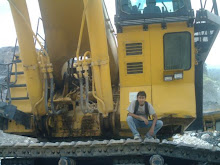Ask anyone what an airplane looks like and most will tell you a tube with wings. NASA researchers are trying to expand that image. They're testing a design for a flying wing, called a blended wing body.

Technicians have installed a five-percent scale model of a blended wing body in the Langley Full-Scale Tunnel at NASA's Langley Research Center in Hampton, Va. During tests in the tunnel's huge 30X60 foot test section, pilots "flew" the 12-foot wingspan, 80-pound model. It stayed aloft in the tunnel's wind stream constrained only by a tether cable. The flying wing is the biggest model ever free flight tested in the Full Scale Tunnel.
"We want to understand the edge of the envelope flight characteristics of the blended wing body," said Dan Vicroy, blended wing body flight dynamics principal investigator. "We're comfortable with the flight characteristics of conventional tube with wings airplanes, but we don't have much experience with flying wings."
NASA is working with Boeing Phantom Works, Long Beach, Calif., on this advanced, more fuel-efficient and environmentally friendly airplane concept. Researchers say a blended wing body could be useful as a multi-role aircraft for the military, including functioning as a tanker, cargo or transport plane.
Much testing needs to be done before the flying wing could be safely introduced as a transport aircraft. The blended wing body doesn't have a conventional airplane tail, used to control pitch (up and down) and yaw (side to side) motions. Instead it uses a combination of control surfaces on the trailing edge of the wing to maneuver the airplane. The free flight tests will help assess the best combination of control surfaces and limits.
Other questions also need to be answered about the blended wing body configuration. "One question is how do you build a lightweight structure that can be pressurized," Vicroy said. "It's easy to pressurize a tube, but not as easy to pressurize a non-cylindrical shape."
Even building the blended wing body model was a challenge. For this test the model had to be dynamically scaled. It had to have the same scaled shape as the real plane, same scaled weight and inertia characteristics of roll, pitch and yaw. The model had to be light for its size. It was built from graphite composite material similar to a Formula 1 racecar.
Owned by Langley and operated by Old Dominion University, Norfolk, Va. The Tunnel was completed in 1931. It has tested World War II fighters, submarines, the Mercury space capsules, supersonic transport concepts and the flying wing.
The research is part of the Fundamental Aeronautics Program in NASA's Aeronautics Research Mission Directorate. The program's goal is to advance breakthrough aerospace technologies.
Video of testing is available on the NASA TV Videofile. For continental North America, NASA TV is carried on an MPEG-2 digital signal accessed via satellite AMC-6, at 72 degrees west longitude, transponder 17C, 4040 MHz, vertical polarization. It's available in Alaska and Hawaii on an MPEG-2 digital signal accessed via satellite AMC-7, transponder 18C, 137 degrees west longitude, 4060 MHz, vertical polarization. A Digital Video Broadcast compliant Integrated Receiver Decoder is required for reception. For information about NASA TV, including digital down link information, oleh:sciencedaily




0 komentar:
Posting Komentar